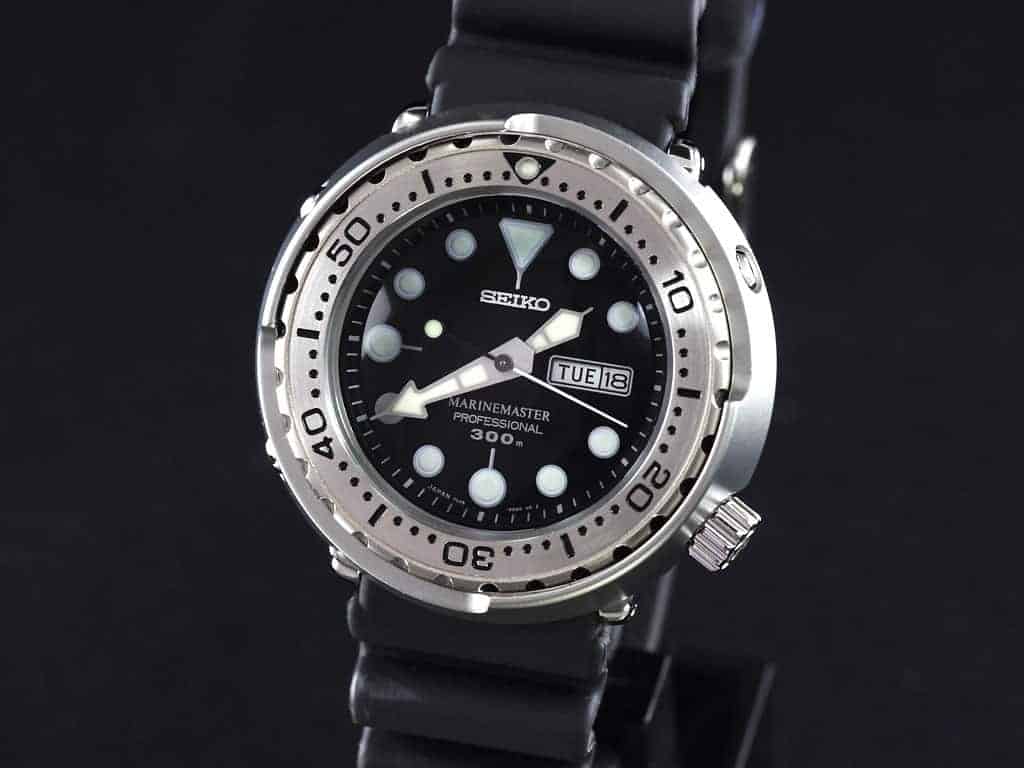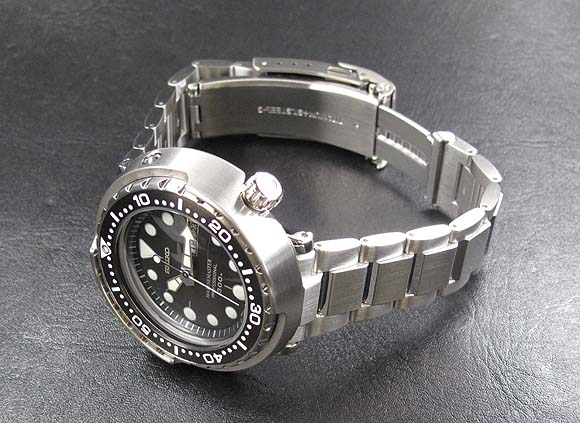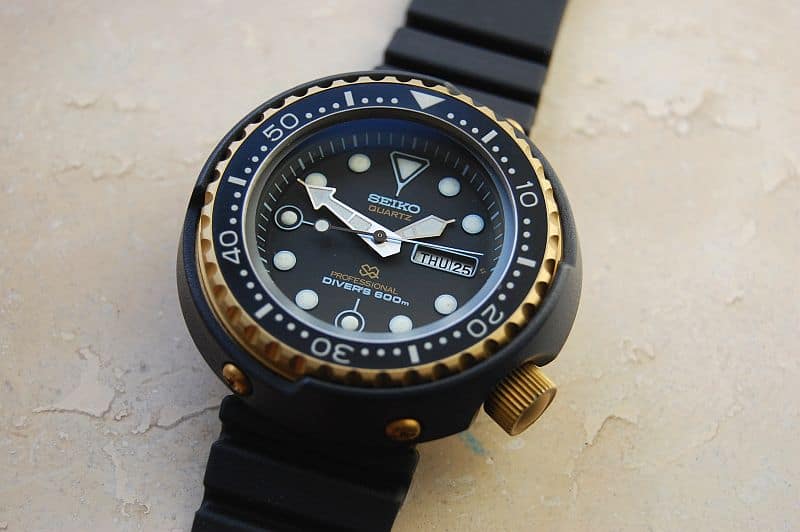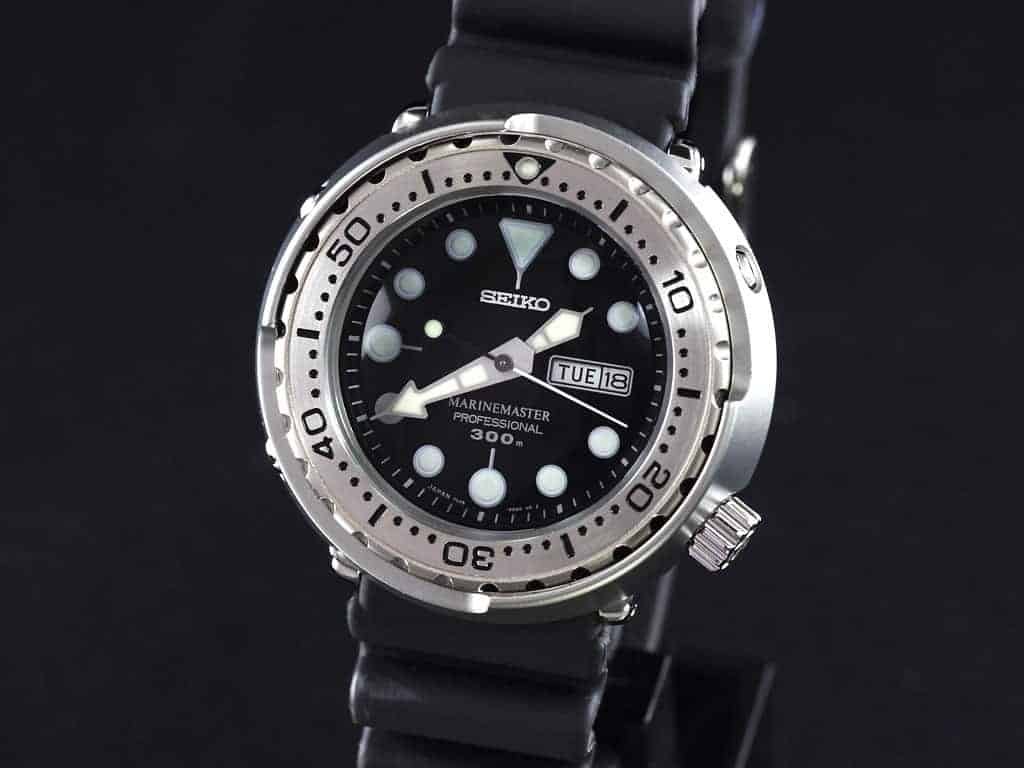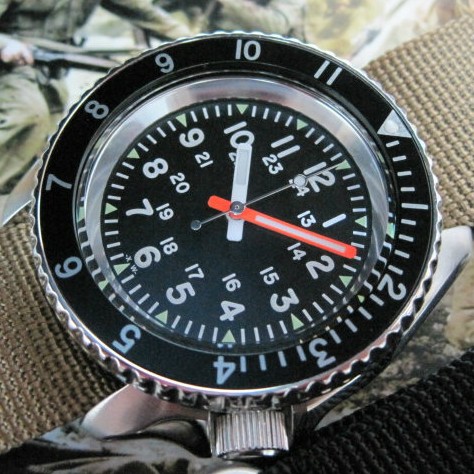Watch out for Tuna fever. It’s contagious.
I won’t go deep into the history, but the beginnings of the Seiko shrouded diver go back to 1975 with the introduction of the 6159-7010, which is known as the Grandfather Tuna. It’s a magnificent watch that features a titanium case, L-shaped crystal gasket, ceramic-coated titanium shroud, automatic movement and no helium escape valve. Seiko was at the time seeking to create a watch that could hold up well for professional saturation divers and came up with the first Tuna. The modern version is nicknamed the Emperor Tuna, the SBDX011, which retails for around $2,300 and uses an undecorated Grand Seiko movement, the 8L35.
The first quartz Tuna was the 7549-7009, also known as the Golden Tuna for its gold colored accents. Released in 1978, the 600-meter rated watch was Seiko’s first quartz diver meant for professional diving.
![7549ligepovenfra]()
For the me the Tuna series hits its sweet spot at the 300 meter depth-rated quartz Prospex models, the SBBN015 and the SBBN017, both well under $1,000 with the current exchange rate at the time of this article’s publication. If you’re a worn&wound reader who’s thinking, “Why would I pay over $500 for a quartz watch?” then you probably haven’t held a Tuna in your hands or strapped one on your wrist.
Here are 10 reasons (or excuses) for adding a Tuna to your collection:
- There’s nothing else like it at all. It’s a conversation starter and it’s so unlike a typical diver in appearance that no one will mistake you for wearing a Sub clone. But it still maintains traits that show its relationship with the rest of the Seiko diver watch heritage.
- It has historical significance and it’s part of the Seiko dive watch lineage.
- It wears a lot smaller than its specs because of the short lug design.
- The 7C46 high-torque quartz movement is designed specifically for this model. It can be serviced and uses a 7-jeweled gear train and dual-rate trimmers for maximum efficiency.
- In my experience, Tunas are very accurate and have a battery life lasting over five years. An end-of-battery-life indicator will show the seconds hand ticking at every two seconds to show it’s time for a battery change.
- The build quality rivals far more expensive watches. The printing on the dial, unique brushed hands, the smooth bezel action and sublime crown feel make it a joy to look at and operate.
- They wear well with every type of strap, from Isofranes to OEM bracelets to mesh to nylon to canvas to leather. The drilled-through lug holes make swaps easy too. Mine, for the most part, live on really broken-in Maratac Zulu straps.
- The Kanji days of the week are just plain cool.
- The lume is killer.
- It’s very durable and looks even better after it’s been through some watersports action.
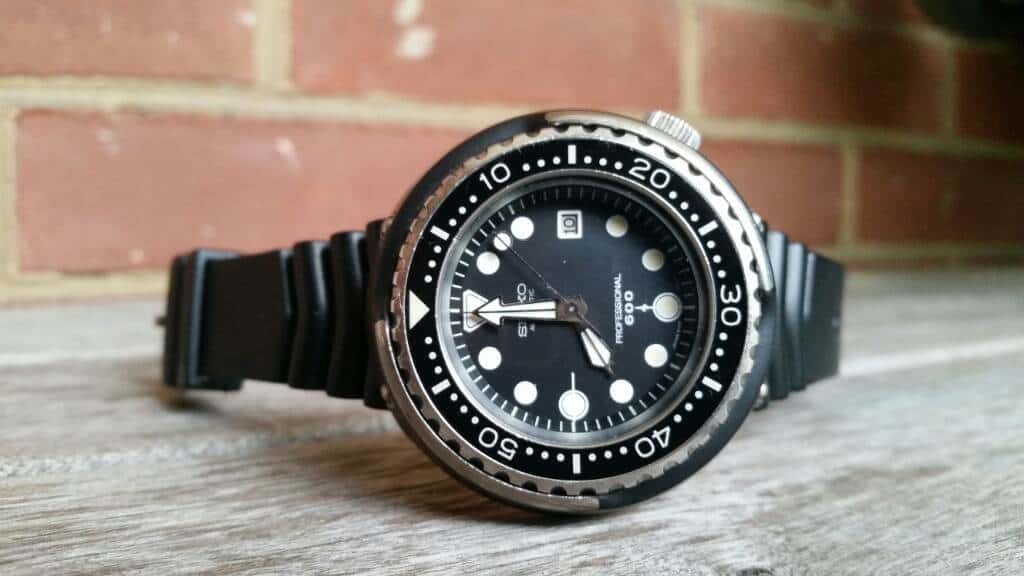









 Featured Videos
Featured Videos




